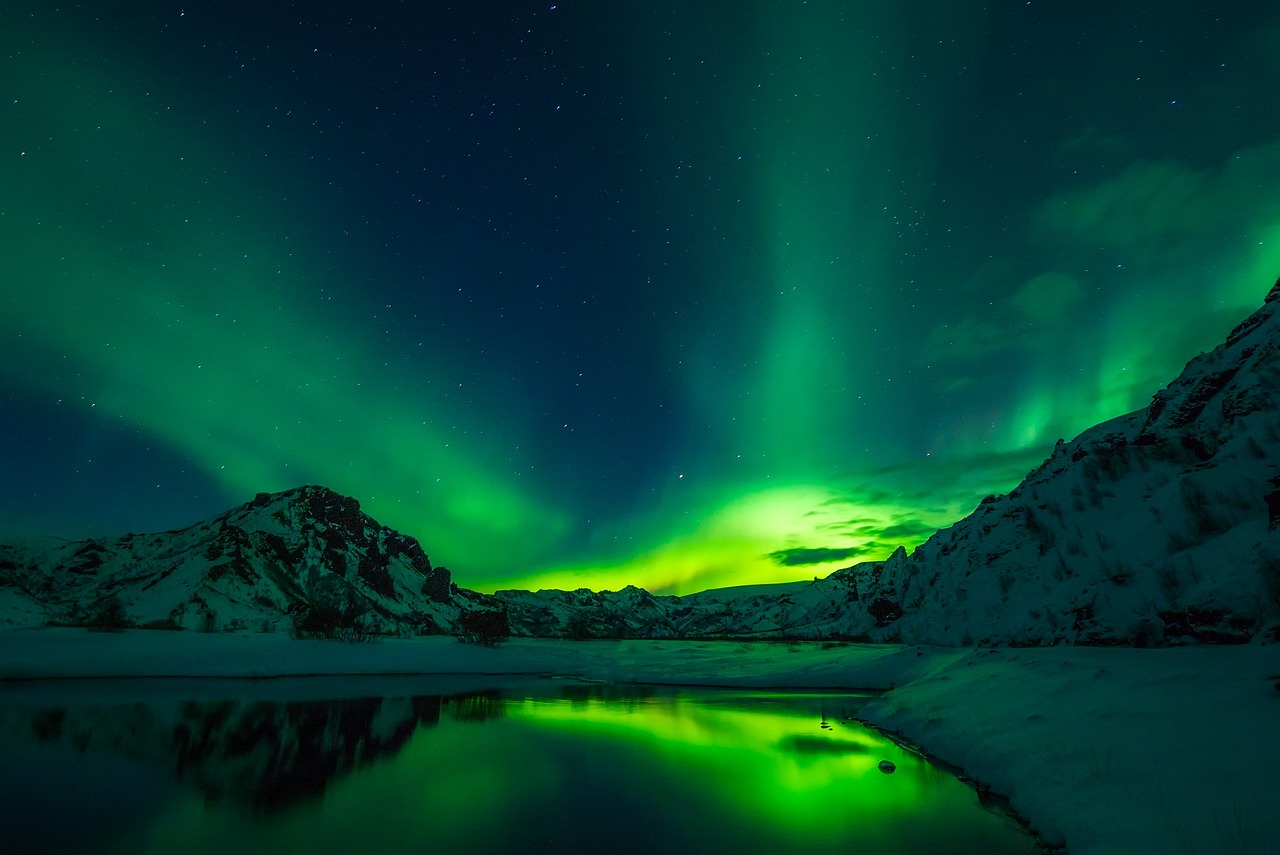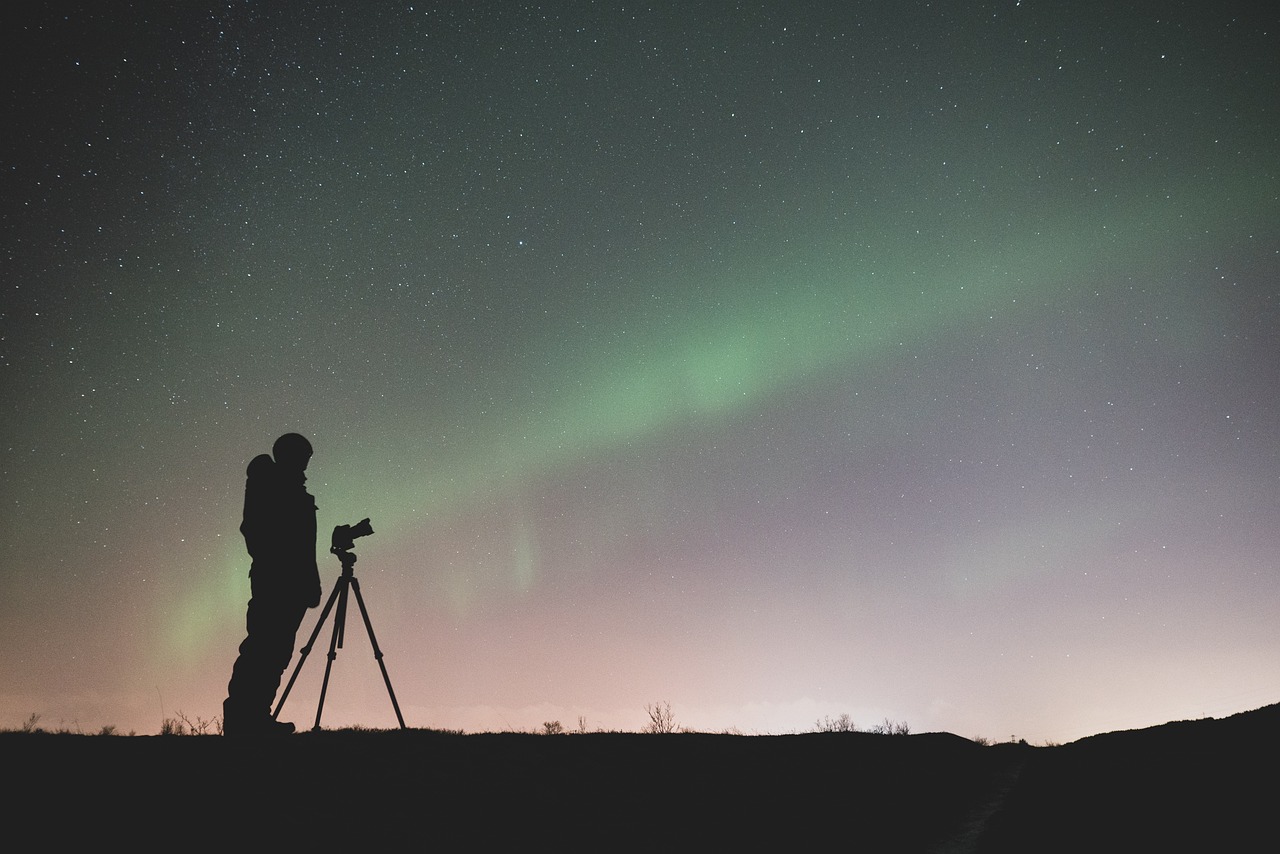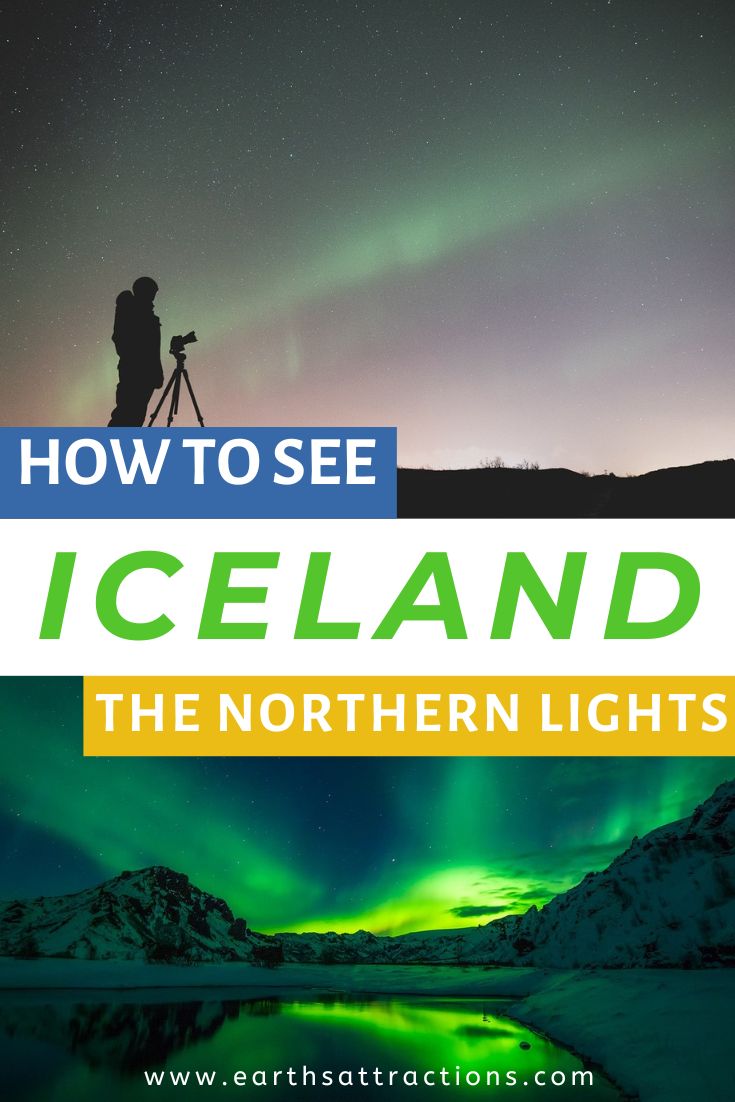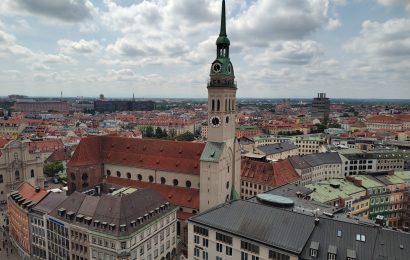Seeing the Northern Lights is an amazing experience! This article provides details on how to see the Northern Lights in Iceland. From where to see the Northern Lights in Iceland to tips we’ve got you covered!
As we presented in a previous article, Iceland is home to some amazing attractions, some of them being great places to see the northern lights in Iceland too.
What are the Northern Lights
The Northern Lights – or Aurora Borealis or polar lights are in fact disturbances in Earth’s magnetic field. The predominant colour is green, but the lights can also be red, purple, and blue.
The Northern Lights are most commonly seen in the polar regions during the winter months when the nights are longer, and the sky is darker.
Best time to see the Northern Lights in Iceland
The best months to see the Northern Lights in Iceland are from September to mid-April. Usually, the best months in this interval are December and January.
Obviously, the Aurora Borealis is visible during the night – the best hours are from 9 PM to 2 AM.
How to see the Aurora Borealis in Iceland
If you are planning a trip to Iceland and want to see the Aurora Borealis, the first thing to know is that there is no guarantee that you will be able to see it. It is a natural phenomenon, so it is not something that people can influence. However, there are a few tips to see the Aurora Borealis in Iceland (see the section below too.)
Tip 1: Check the aurora forecast in advance. This is a prediction of the likelihood of seeing the Northern Lights based on various factors such as solar activity, cloud cover, and geomagnetic activity and it is offered by several sites and apps.
Tip 2: Go near a city to be able to fully enjoy the northern lights. You can rent a car in Iceland and, planning your trip in advance, you can go to one of the many places that offer a great view of the aurora borealis. This is why exploring Iceland on a self drive is the best option for such a trip!
Tip 3: Make sure you are prepared for the cold weather – pack layers of warm clothes and make sure you have gloves and boots that keep you warm!
Tip 4: Try to be flexible – if possible, keep your Iceland itinerary flexible so that, while keeping an eye on the aurora forecast, you can go to the chosen destination to see the northern lights at the best time.
Where to see the Northern Lights in Iceland
There are several best places to see the northern lights in Iceland. They are all away from the city, in places with lower light pollution.
Here are some of the popular places to see the Northern Lights in Iceland:
- Thingvellir National Park – set in a Rift Valley in Southwest Iceland, the park is a designated World Heritage Site which makes it a perfect place to see the northern lights and explore the area during the day!
- Jökulsárlón Glacier Lagoon – a lake of glacial origin, this is perhaps the best place to see the Northern Lights in Iceland. It is located in the southeastern part of the country.
- Vatnajökull National Park is the place to go for mesmerizing landscapes. You will be in awe when arriving here, as the landscape – a mix of Arctic landscape and wild nature – is truly amazing.
- Seltjarnarnes in Reykjavík – this is perfect if you want to stay close to Reykjavik.
Other tips for enjoying the Northern Lights in Iceland
While organizing a trip around the idea of seeing the Northern Lights in Iceland, try to plan an itinerary that will offer you the chance to admire some of the gems in Iceland.
Enjoy each place during the day – as all parks and cities have something to offer.
Use this trip to learn more about local culture, history, and art – especially if you’ve never been to Iceland before.
Include relaxing and fun activities on your list – depending on your preferences and the selected area.
If you have the possibility, bring a camera with you and try to take pictures of the Northern Lights:
- make sure you bring a tripod
- use a wide-angle lens to capture as much sky as possible
- set your ISO to about 1600 and adjust as needed
- if possible, use a remote shutter release or a self-timer to prevent the camera from shaking. Set your shutter speed to about 10-15 seconds – and maybe try different exposures.
- set your aperture to the widest setting
These are common tips for taking pictures at night, and they are useful for capturing the northern lights too. Yes, it is possible to not get great shots (we have so many photos with night sky we delete, but keep trying to get better.)
Again, remember that seeing the northern lights cannot be guaranteed (not even by tour operators). But, by maximising each aspect of the trip, you can increase your chances fo seeing them.
Try to include many things to do on your Iceland itinerary so that you have a complete experience (and are not too disappointed if you don’t see the lights the first time). There’s always the next trip!






